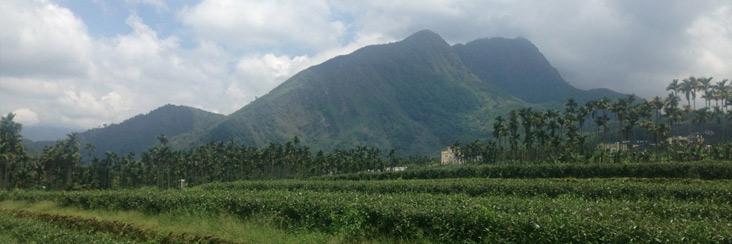
Recent Encounters With Concubine Oolong Tea
Yesterday we visited our regular source of Dong Ding Oolong tea to taste the recent batch of tea made from his harvest a couple weeks ago. This was an exceptionally small harvest for two reasons: The plants were pruned quite low after the spring harvest and the farmer did not administer any pesticides during the recent growing season. He intentionally let the new leaf growth be affected by the Green Leaf Hopper. These are photos of two bird nests that were in the tea trees – confirmation from the local wildlife that this was a chemical-free zone!


 As is often the case, Mr. Liu had a thoughtful agenda in mind for us. He brewed three samples of tea: Last winter's harvest, the recent spring's harvest, and the late spring/summer harvest from the plants in the picture above. All three crops had been affected more or less by the tiny little insect that is responsible for the unique, honey-like qualities in Concubine Oolong. In addition to the varying extents of "bug-bitten effect", these three batches of tea were oxidized and roasted to different degrees.
As is often the case, Mr. Liu had a thoughtful agenda in mind for us. He brewed three samples of tea: Last winter's harvest, the recent spring's harvest, and the late spring/summer harvest from the plants in the picture above. All three crops had been affected more or less by the tiny little insect that is responsible for the unique, honey-like qualities in Concubine Oolong. In addition to the varying extents of "bug-bitten effect", these three batches of tea were oxidized and roasted to different degrees.

The tea on the left is winter tea, and was made in the fashion of traditional Dong Dong Oolong. The crop was only minimally affected by the Green Leaf Hopper, but enough to give it a more complex profile of flavor. The middle tea is spring tea, and was oxidized to be a standard Dong Ding Oolong, but was left unroasted, until just recently. The tea on the right is the most recent harvest, and since the leaves were heavily affected by the Green Leaf Hopper, they were oxidized more heavily than the other two. However the tea on the right was only roasted slightly more than the middle tea, yet less than the tea on the left. So even visually, we can recognize the varying and combined effects of oxidation and roasting.

We found the middle brew of spring tea to be the most interesting, both in character and the story that went with it. During the growing season, the farmer realized that the growth stage of the leaves was only weeks away from harvest. He decided that, even though it was more than enough time by recommended standards, he would not spray the plants again before harvest. So, in the final weeks of the growing season, the leaves were affected by the Green Leaf Hopper, but less than if they were bitten in their budding/early growth stage. This resulted in a batch of tea that was more obviously bug bitten than last winter, but much less than the most recent summer crop which grew totally naturally.
This spring batch was offered to a regular customer who likes this farmer's tea left unroasted, despite the fact that he specializes in Dong Ding Oolong. Mr. Liu decided to share what he thought was an exceptional quality tea with a unique character. It turns out the customer, who knows what he likes, was not satisfied! I happened to be there a couple months ago when the farmer was tasting a sample of the opened bag of tea that was sent back from this customer. Upon tasting it, I said, "Ask for the whole batch to be returned, offer him another batch of standard unroasted tea, and I'll take this one! I was half-joking, but half-serious, and it turns out that is what is going to happen! After we discussed how much roasting is suitable for this tea, Mr. Liu used his own discretion, and yesterday we agreed that this was just right. So it was a win-win situation in the end, and we will be able to offer a small amount of this specially made spring tea very soon.
For more information on Concubine Oolong, you can visit our Knowledge Base page on this topic.

